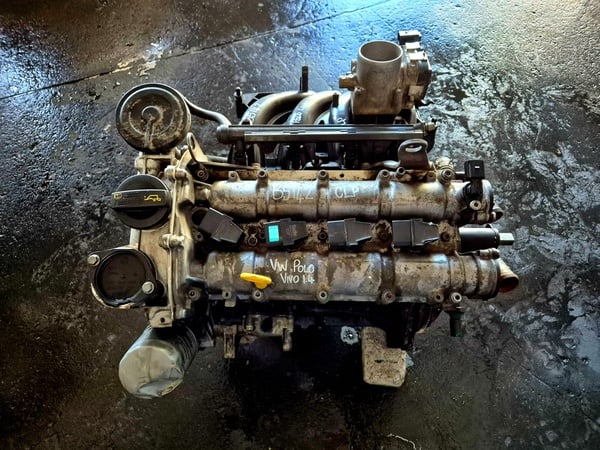Optimize fuel efficiency with a top-tier clp engine.
Wiki Article
Exactly How a Clp Engine Can Enhance Performance in Various Industries
The advent of CLP engines notes a substantial change in operational performance throughout various markets, driven by their ability to optimize gas usage and reduce downtime. Industries such as production and logistics stand to get considerably from their robust layout and constant power output, which guarantee to enhance operations and improve productivity. As companies progressively prioritize sustainability along with effectiveness, the duty of CLP engines ends up being much more vital. What stays to be seen is exactly how these innovations will form the future landscape of commercial operations and their impact on broader financial patterns (clp engine).Summary of CLP Engines
CLP engines, or Continuous Liquid Propellant engines, represent a substantial improvement in propulsion modern technology, especially for space applications. These engines make use of a constant feed system that permits the continual expulsion of propellant, leading to improved effectiveness and efficiency compared to standard strong or hybrid propulsion systems. By preserving a constant circulation of liquid propellant, CLP engines can accomplish extra exact thrust control, which is critical for navigating spacecraft in numerous objective situations.The layout of CLP engines integrates sophisticated products and innovative gas administration systems. clp engine. This causes reduced weight and raised dependability, vital aspects for long-duration room objectives. Furthermore, the continual operation lessens the risk of combustion instability, a common obstacle in standard rocket engines.

Benefits in Manufacturing
The production of Continuous Liquid Propellant (CLP) engines presents numerous significant benefits that boost both effectiveness and cost-effectiveness. One of the primary benefits is the streamlined manufacturing process, which decreases the intricacy linked with typical propulsion systems. By utilizing fluid propellant, makers can accomplish higher accuracy in engine efficiency, resulting in maximized power result and minimized waste.Additionally, CLP engines facilitate a greater level of modularity, enabling easier integration right into different production lines. This flexibility can considerably decrease preparations and enhance general functional flexibility. Making use of CLP innovation additionally has a tendency to lessen the requirement for extensive maintenance due to fewer moving parts, which translates into reduced downtime and operational costs.

Applications in Logistics
Leveraging Continual Liquid Propellant (CLP) engines in logistics uses considerable benefits in functional effectiveness and reliability. These engines offer a durable solution for numerous transportation demands, enabling the smooth activity of goods across vast ranges. The integral design of CLP engines enables consistent power output, which converts into smoother and a lot more predictable transportation routines.One of the vital applications of CLP engines in logistics remains in heavy-duty products transport, where they can drive both ground and aerial automobiles. Their capability to keep high performance under varying load problems makes sure that distribution timelines are satisfied, consequently improving consumer contentment. Furthermore, CLP engines can be incorporated right into automated logistics systems, assisting in real-time monitoring and optimizing course preparation.
Furthermore, the longevity of CLP engines minimizes maintenance our website downtime, enabling logistics business to optimize their functional capacities. This is specifically advantageous in warehousing operations, where performance in dealing with and transferring goods is essential. As logistics remains to evolve, the assimilation of CLP engines represents a forward-thinking method that not only improves efficiency but also sustains the sector's growing demands for reliability and rate.
Effect On Power Efficiency
How do Continual Liquid Propellant (CLP) engines boost power efficiency in transport? CLP engines make use of a consistent flow of fluid fuel, maximizing burning processes and keeping a secure thrust outcome. This layout lessens energy losses connected with typical combustion engines, where fuel distribution can differ and lead to ineffectiveness.The constant operation of CLP engines permits for a much more effective thermal cycle, leading to greater specific impulse compared to traditional engines. clp engine. This equates to reduced fuel usage for the very same quantity of job done, substantially decreasing functional prices across different transportation sectors, including aeronautics and maritime industries
Additionally, the capability of CLP engines to preserve optimal performance under varying tons problems decreases the need for regular acceleration and slowdown, even more improving fuel performance. Boosted energy efficiency not only adds to set you back financial savings yet likewise causes lower greenhouse gas emissions, aligning with international sustainability objectives.
Future Trends and Innovations
Arising innovations in Constant Fluid Propellant (CLP) engine modern technology promise to revolutionize the landscape of transport efficiency and sustainability. As markets pivot towards greener options, CLP engines stand at the forefront, incorporating innovative materials and style techniques that boost efficiency while lessening ecological effect.Among one of the most promising fads is the adoption of hybrid systems that incorporate CLP engines with renewable energy sources. This harmony can maximize gas usage and reduce discharges, lining up with worldwide sustainability goals. Innovations in computational liquid characteristics (CFD) are helping with the layout of more aerodynamically effective engines, leading to decreased drag and improved fuel effectiveness.
Furthermore, the growth of clever monitoring systems is readied to enhance functional efficiencies. These systems leverage information analytics and IoT technology to maximize engine performance in real-time, making certain that the engines run within their most efficient specifications.
As research proceeds to check out alternate propellant solutions-- such as biofuels and artificial gas-- the future of CLP engines looks promising. By using Visit Website these advancements, sectors can not just boost their performance however additionally contribute significantly to a cleaner, much more sustainable future in transportation.
Verdict
In final thought, CLP engines represent a considerable development in efficiency across numerous sectors. Their look at more info ability to maximize gas intake and reduce functional prices, combined with a continual feed system, enhances power outcome and functional integrity. The combination of advanced materials and fewer relocating components lessens upkeep needs, while alignment with sustainability objectives placements CLP engines as a critical modern technology for the future. Proceeded technology in this field promises additional improvements in effectiveness and ecological performance.Report this wiki page